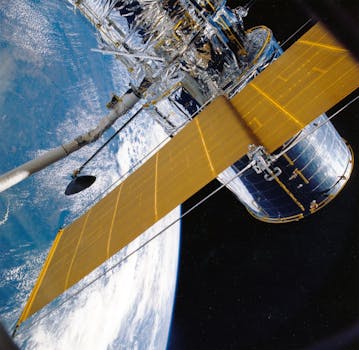From Geostationary to Low Earth Orbit: The Evolution of Satellite Telecommunications in 2023 – Satellite

From Geostationary to Low Earth Orbit: The Evolution of Satellite Telecommunications in 2023 – Satellite
Satellite telecommunications has undergone significant transformations over the years, and one of the most notable shifts is the transition from geostationary to low Earth orbit. This evolution has revolutionized the way we communicate, and in this article, we will delve into the advancements and benefits of this transition.
Introduction to Satellite Telecommunications
From Geostationary to Low Earth Orbit: The Evolution of Satellite Telecommunications in 2023 – Satellite telecommunications have been a vital part of our communication infrastructure for decades. The first commercial satellite, Intelsat 1, was launched in 1965, and since then, the industry has experienced tremendous growth. Satellites have played a crucial role in providing global connectivity, enabling communication between remote and underserved areas, and supporting various industries such as maritime, aviation, and broadcasting.
The Shift from Geostationary to Low Earth Orbit
Geostationary orbit, which is approximately 36,000 kilometers above the equator, has been the traditional choice for satellite telecommunications. However, with the advancement of technology, the industry has started to shift towards low Earth orbit (LEO), which is approximately 160-2,000 kilometers above the Earth’s surface. This shift is driven by the need for faster, more reliable, and cost-effective communication services. LEO satellites have several advantages over geostationary satellites, including lower latency, higher bandwidth, and improved signal strength.
Benefits of Low Earth Orbit Satellites
The benefits of LEO satellites are numerous, and they have the potential to transform the satellite telecommunications industry. Some of the key advantages include:
Lower latency: LEO satellites have a significantly lower latency compared to geostationary satellites, which is essential for real-time communication applications such as video conferencing and online gaming. Higher bandwidth: LEO satellites can support higher bandwidth applications, making them ideal for high-speed data transfer and streaming services. Improved signal strength: LEO satellites have a stronger signal strength, which enables better communication quality and reduced signal loss.
Applications of Low Earth Orbit Satellites
LEO satellites have a wide range of applications, including:
Broadband internet: LEO satellites can provide high-speed broadband internet services to remote and underserved areas, bridging the digital divide. IoT connectivity: LEO satellites can support the growing demand for IoT connectivity, enabling low-power, low-cost communication for various applications such as smart cities, agriculture, and logistics. Earth observation: LEO satellites can be used for Earth observation, providing high-resolution images and data for applications such as environmental monitoring, disaster response, and crop monitoring.
Conclusion
In conclusion, the evolution of satellite telecommunications from geostationary to low Earth orbit is a significant milestone in the industry. LEO satellites offer several advantages, including lower latency, higher bandwidth, and improved signal strength, making them ideal for various applications such as broadband internet, IoT connectivity, and Earth observation. As the demand for satellite telecommunications continues to grow, the shift towards LEO satellites is expected to accelerate, enabling faster, more reliable, and cost-effective communication services.



